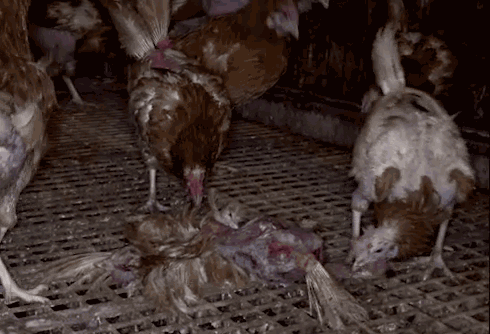Bird Flu: The Start of Another Pandemic? Human Catches Bird Flu in the UK
Have you heard of bird flu? This week, we stepped cautiously into 2022, hoping for a “new normal” with notions of a life similar to pre-2020. Now, the news has landed that another disease – bird flu – has spread to a human.

The UK Health Security Agency has confirmed that a West Country resident has become the first human in the UK to contract bird flu.
We’re still in the clutches of COVID-19, and now the risk posed by bird flu could not be more real or more dire. Experts believe that it’s only a matter of time before a strain of bird flu causes a widespread human outbreak. These viruses are constantly changing, and weaker forms in birds are known to take just months to mutate into highly pathogenic forms for which no effective treatment or vaccine exists.
What Is Bird Flu?
Bird flu, also known as avian flu, is a type of influenza that spreads among birds. The H5N1 strain of bird flu – the outbreak of which we are now seeing in the UK – originated in farmed geese before infecting chickens raised for their flesh and eggs.
Is Bird Flu Harmful to Humans?
Yes, it is. Some strains of bird flu can be transmitted from birds to humans. Over the last two decades, bird flu has killed hundreds of people around the globe. The most deadly of the bird flu strains are H5N1 (which is now present in the UK) and H7N9. The mortality rate for humans infected with the H5N1 strain is 60%.
It is relatively easy to contract bird flu if you come into contact with infected animals. The virus can be passed on to humans who touch the feathers, flesh, or faeces of infected birds.
People who take chicken flesh and eggs into their homes may be putting themselves and their families at risk. According to the US Centers for Disease Control and Prevention and the World Health Organization, the virus can be caught simply by eating undercooked meat or eggs, by eating food prepared on the same cutting board as infected meat or eggs, or even by touching eggshells contaminated with the disease.

Breeding Grounds for Disease
Most chickens raised for their flesh are crammed into sheds with up to 50,000 other birds, and they may never get to see daylight or breathe fresh air. Many live amid their own waste as well as dead and dying birds, making these factory farms a breeding ground for disease.

Previous bird flu outbreaks have led to the mass killing of chickens (before they were to be slaughtered for their flesh). In the winter of 2016, more than 22 million birds were killed and dumped in South Korea because of a bird flu outbreak, and over 100 million more have been killed in the 2000s and 2010s to prevent epidemic outbreaks of bird flu from infecting humans and sparking a global pandemic. But none of these birds should have been bred and confined in the first place.

Chickens put at such high risk of disease so that they can be murdered and eaten. Our appetite for animal flesh is going to be the death of us.
Bird Flu Cases Are on the Rise in the UK and Europe
The most recent bird flu outbreak started in the UK in November 2021, and cases have now been reported on over 70 farms. Since 1 January, five new cases have been identified in Lincolnshire, Berkshire, and Cumbria.
This isn’t just a problem for the UK – cases are popping up across Europe, too. France, Germany, Italy, the Netherlands, Norway, and Poland all reported avian flu cases in birds this winter. Just this week in the Netherlands, around 190,000 chickens were killed after the highly pathogenic H5N1 bird flu strain was detected at one farm.

Leave Dead Birds Off Your Plate and Eat Vegan Chicken – the World Depends on It
We can’t risk another pandemic, and we don’t need to fatten, confine, and kill birds for their flesh. Our health and lives depend on our daily choices – so act today. By going vegan, you will have a lower impact on the planet, improve your health, and spare the lives of countless animals – and you’ll be one less person contributing to the next pandemic, a ticking time bomb waiting to go off.
We’ve got everything you need to get started – fancy a fried chicken fix?
Or did the egg craving come first? Don’t worry, we have the best ways to replace cholesterol-filled chickens’ eggs with options that are good for your heart and your health:
Check out these recipes that use chickpeas instead of chickens. Perfect if you’re keeping it whole foods plant-based this Veganuary.
It’s time to go vegan. What are you waiting for? We’re ready to help you make the switch – take the vegan challenge.



